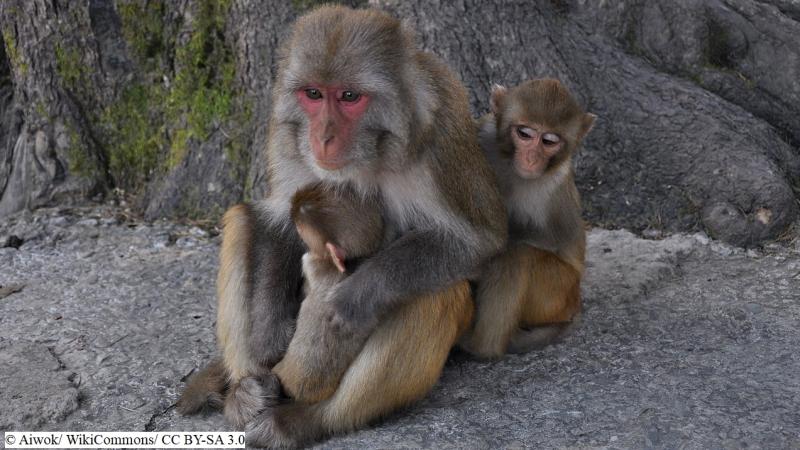
In India, monkeys have a special place—although they run amok in our neighbourhoods, much to the annoyance of people, they are worshipped as gods by a few. Sometimes, these monkeys carry deadly diseases, like the 'monkey fever' or the Kyasanur forest disease. In a first, a study by researchers from the Indian Institute of Science, Bengaluru, and the Kerala Forest Department, has reported the presence of the human malaria parasite, Plasmodium falciparum, in two species of Indian monkeys.
Malaria is a disease caused by the parasite Plasmodium. It uses mosquitoes and humans as hosts and is known to switch hosts from non-human primates to humans. So far, the Plasmodium species found in monkeys were not found in humans, but there have been cases in the past where humans were infected with malaria parasites found in monkeys, called simian malaria parasites. In this study, the researchers have analysed the genetic information of the Indian simian malaria parasites. The study was published in the journal PLOS Neglected Tropical Diseases and was funded by the Indian Council of Medical Research, Delhi, and the Department of Biotechnology.
“This is the first study to report on the presence of human malaria parasite in Indian monkeys and to explore the genetics of Indian simian malaria parasite. However, we still do not know whether the parasite was able to infect monkeys or was just trying its luck in getting entry into the monkey’s system”, says Dr Jyotsana Dixit, a researcher at IISc and the lead author of the study.
The researchers extracted genetic material from 349 faecal samples of Indian wild monkeys collected from different locations throughout the country. These samples were then screened for the malaria parasite using molecular techniques. It was found that faecal samples from the two common Indian monkey species—rhesus macaque (Macaca mulatta) and bonnet macaque (Macaca radiata)—contained human malaria parasite.
“The presence of the human malaria parasite, P. falciparum, in Indian macaques was an unexpected finding as it had never been reported earlier. However, it is not surprising given such observations have been made before in other primate species”, says Prof. Praveen Karanth, Associate Professor at the Centre for Ecological Sciences, IISc, and an author of the study.
To confirm their surprising findings of the human malaria parasites, the researchers then analysed 94 blood and tissue samples from bonnet macaques in southern India. They found that apart from the known simian malaria parasites, two samples of liver tissues contained the human malaria parasite, Plasmodium falciparum.
When the researchers analysed the population distribution of the monkeys using their genetic data, they found that the populations were genetically mixed up. This finding is interesting because monkeys are known to live in matrilineal troops, where the females remain in their natal territory, and the males disperse when they grow up. “It indicates that human-mediated translocations have played a role in dispersing monkeys all around the country, which has a strong influence on the dispersal of their parasites too. Thus, we need to be cautious before shifting troublesome monkeys from one place to another as it may lead to an easy spread of parasites into new regions”, warns Dr Dixit.
Malaria parasites are known to switch hosts and studies in the past have shown evidence of Plasmodium species turning from apes to humans as hosts. Thus the current study raises few concerns about the proper screening of Indian monkey populations for the presence of malaria parasites as it might be important not only for diseases management but also for evolutionary studies to trace back the history of human malaria parasites.






